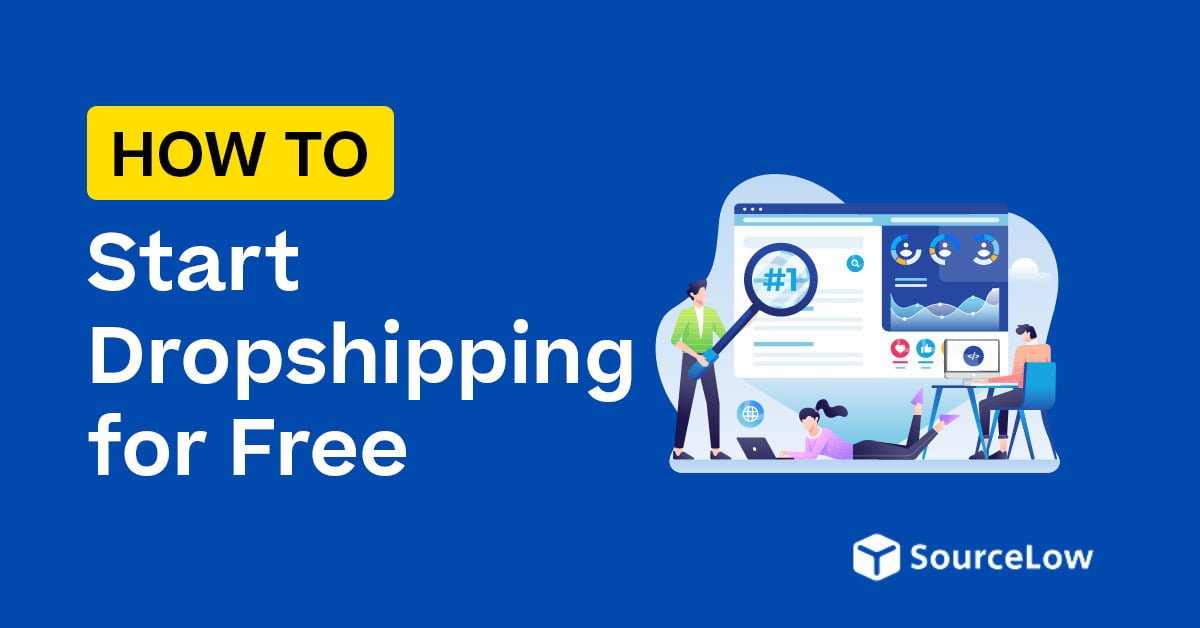Dropshipping has become a popular business model for aspiring entrepreneurs looking to enter the e-commerce world without breaking the bank. Unlike traditional retail, dropshipping allows you to sell products without holding inventory or investing heavily upfront. Instead, you partner with suppliers who handle inventory, packaging, and shipping, while you focus on marketing and sales. The best part? You can start dropshipping with a low budget if you approach it strategically. In this article, we’ll walk you through the steps to launch a successful dropshipping business without a hefty financial commitment.
Choose a Profitable Niche
The foundation of a successful dropshipping business lies in selecting the right niche. A niche is a specific segment of the market that caters to a targeted audience. To keep costs low, focus on a niche that’s trending but not oversaturated. Research products that solve problems, appeal to hobbies, or align with current consumer interests.
- Tips for Finding a Niche:
- Use free tools like Google Trends to identify rising search terms.
- Browse social media platforms or marketplaces like Amazon to spot popular products.
- Avoid overly broad categories (e.g., “clothing”) and opt for something specific (e.g., “sustainable yoga wear”).
By targeting a niche with demand, you can maximize your sales potential without spending heavily on advertising.
Find Reliable Suppliers
Since you won’t be handling inventory, your suppliers are the backbone of your dropshipping business. Look for reliable partners who offer quality products, fast shipping, and competitive pricing. Popular platforms like AliExpress, Oberlo (for Shopify users), or Spocket are great starting points because they connect you with suppliers worldwide at no upfront cost.
- Low-Budget Supplier Tips:
- Start with free supplier directories instead of paid subscriptions.
- Filter suppliers by location (e.g., local warehouses) to reduce shipping times and costs.
- Order samples (if affordable) to ensure product quality before selling.
Building a good relationship with your supplier can also lead to better deals over time.
Set Up a Simple Online Store
You don’t need a fancy, custom-built website to start dropshipping. With a low budget, leverage affordable or free e-commerce platforms to get your store up and running quickly.
- Budget-Friendly Options:
- Shopify: Offers a 14-day free trial and plans starting at $39/month. Use Oberlo (free tier) to import products.
- WooCommerce: Free if you already have a WordPress site, though hosting costs apply (around $5-$10/month).
- Wix or Ecwid: Affordable plans with e-commerce features starting at $15-$20/month.
Stick to free or low-cost themes and focus on functionality over aesthetics in the beginning. Add essential pages like “About Us,” “Contact,” and a clear return policy to build trust with customers.
Keep Marketing Costs Low
Marketing is where many new dropshippers overspend, but you can promote your store effectively without a big budget. Focus on organic and low-cost strategies to drive traffic and sales.
- Free or Low-Cost Marketing Ideas:
- Social Media: Create accounts on platforms like Instagram, TikTok, or Pinterest to showcase your products. Post consistently and use relevant hashtags to reach your audience.
- Content Marketing: Write blog posts or create videos about your niche (e.g., “Top 10 Eco-Friendly Yoga Accessories”) to attract organic traffic.
- Email Marketing: Use free tools like Mailchimp (up to 500 subscribers) to collect emails and send promotions.
If you have a small budget for ads, start with $5-$10/day on Facebook or Instagram ads, targeting your niche audience. Test small campaigns and scale what works.
Optimize for Profitability
With a low-budget dropshipping business, every dollar counts. To ensure profitability, price your products strategically and minimize unnecessary expenses.
- Pricing Strategy:
- Add a markup of 30-50% over the supplier’s price to cover costs and earn a profit.
- Offer bundles or upsells (e.g., “Buy 2, Get 10% Off”) to increase average order value.
- Cost-Saving Tips:
- Avoid premium tools or subscriptions until your store generates revenue.
- Use free versions of design tools like Canva for product images or logos.
Start Small and Scale Gradually
One of the biggest advantages of dropshipping is its scalability. Begin with a handful of products to test the waters, analyze what sells, and reinvest profits into expanding your catalog or marketing efforts. Avoid the temptation to overcomplicate your store with too many products or features early on—simplicity keeps costs down and lets you focus on sales.
Leverage Free Tools and Resources
The internet is full of free resources to help you succeed in dropshipping without spending much. Here are some to explore:
- Product Research: Google Keyword Planner, TrendHunter.
- Store Management: Free trials of apps like DSers or Printful.
- Analytics: Google Analytics (free) to track store performance.
Final Thoughts
Starting a dropshipping business with a low budget is entirely possible if you’re resourceful and strategic. By choosing a profitable niche, partnering with reliable suppliers, setting up a simple store, and marketing creatively, you can launch your venture for less than $100. The key is to start small, learn from your customers, and reinvest your earnings to grow over time. With patience and persistence, your low-budget dropshipping store could turn into a thriving online business.
Ready to take the plunge? Pick your niche, set up your store, and start selling—your e-commerce journey awaits!
